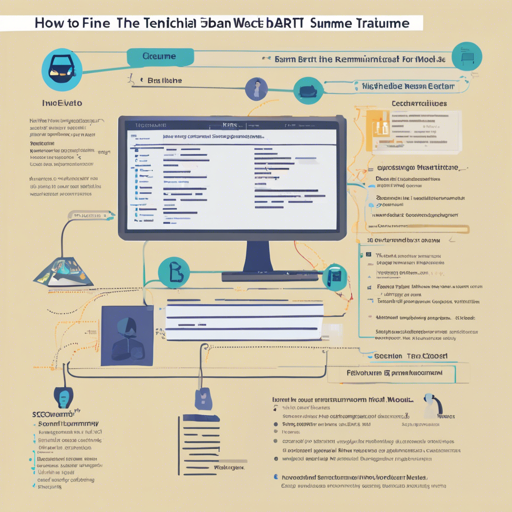Welcome to the world of artificial intelligence where we harness the power of language models to summarize complex texts efficiently. In this article, we will explore how to fine-tune the BART large model specifically for resume summarization. Whether you are a data scientist or just starting, this guide provides a user-friendly approach to creating an effective resume summarizer.
Understanding the BART Model
The BART (Bidirectional and Auto-Regressive Transformers) model combines the best of two worlds: it can encode text like BERT and decode it like GPT. Imagine a translator who understands multiple languages (encoding) and also knows how to create concise summaries in those languages (decoding). Similarly, BART is trained to take lengthy text inputs and generate shorter, meaningful summaries.
Steps to Fine-Tune the Model
Let’s break down the process of fine-tuning BART into easy steps:
- Install Required Packages: Start by installing the necessary libraries. You’ll need Transformers and Pytorch.
- Data Preparation: Prepare your dataset, ensuring it’s structured for training. Resumes can be long, and your goal is to summarize them succinctly.
- Set Hyperparameters: Define your training hyperparameters such as
learning_rate,train_batch_size, andnum_epochs. - Training Procedure: Start the training process using your prepared dataset. This is where the model learns to identify important features within the resumes.
- Evaluation: After training, evaluate your model on a validation set to measure its performance with metrics like
Rouge.
Training Hyperparameters Explained
In the training process, you’ll define critical hyperparameters:
learning_rate: 5e-05– Controls how quickly your model learns.train_batch_size: 4– The number of samples processed before the model is updated.num_epochs: 9– Number of complete passes through the training dataset.optimizer: Adam– Adjusts the learning rate during training.
Understanding Metrics
After evaluating your model, you will encounter metrics such as Rouge1, Rouge2, and Rougel. Here’s the analogy:
Think of these metrics as grades for different aspects of a student’s performance. Rouge1 measures how much an important term is used in summaries, while Rouge2 reflects the use of contiguous phrases, and Rougel evaluates the overall quality of the summarization. The better the scores, the more effective your summarizer is!
Monitoring Training Results
During training, you will want to monitor results closely. Here’s an example of what to look for:
Epoch Step Validation Loss Rouge1 Rouge2 Rougel Rougelsum
0.3463 1.0 44 2.0015 50.2382 40.3332 45.6831 49.1811
0.2771 2.0 88 2.0433 58.3265 50.1555 54.3681 56.9592
Keep an eye on Validation Loss; you want it to decrease, indicating your model is learning well. Meanwhile, aim for high Rouge scores as these represent the model’s summarization effectiveness.
Troubleshooting
If you encounter issues while training your model, consider the following:
- Low Rouge Scores: Re-evaluate your dataset and hyperparameters. Consider increasing the
num_epochsfor more training time. - Training Stops Unexpectedly: Check for memory issues. Reduce
train_batch_sizeif necessary. - Overfitting: If your model performs well on the training data but poorly on validation data, try implementing techniques like dropout layers.
For more insights, updates, or to collaborate on AI development projects, stay connected with fxis.ai.
Conclusion
Fine-tuning the BART model for resume summarization is an empowering process that can yield impressive results. By following the steps outlined in this article, you are well on your way to creating a tool that can simplify the hiring process for both job seekers and employers alike.
At fxis.ai, we believe that such advancements are crucial for the future of AI, as they enable more comprehensive and effective solutions. Our team is continually exploring new methodologies to push the envelope in artificial intelligence, ensuring that our clients benefit from the latest technological innovations.

